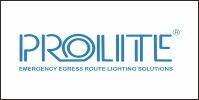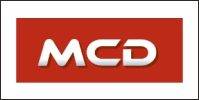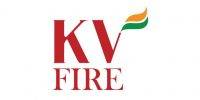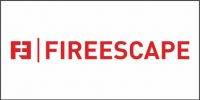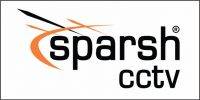 When fire sprinkler systems activate and/or release water we are frequently retained to determine if the systems worked as intended. In the course of these investigations there are common questions that need to be addressed involving system design, maintenance and inspection. This article provides a starting point for fire sprinkler system investigations.
When fire sprinkler systems activate and/or release water we are frequently retained to determine if the systems worked as intended. In the course of these investigations there are common questions that need to be addressed involving system design, maintenance and inspection. This article provides a starting point for fire sprinkler system investigations.
Areas to Consider When Investigating A Fire Sprinkler System Incident
Water Supply
Although there are other types of extinguishing agents, fire sprinkler systems most often rely on water to extinguish a fire. Water is delivered through an engineered system of piping to automatic sprinklers that open in response to a fire.
Water is typically supplied to the sprinkler system from the municipal water supply. When the water supply is inadequate a fire pump is used to boost the flow and pressure to the sprinkler system. When a municipal water supply is not available a storage tank can be used. In all cases, there must be a sufficient amount of water flow and water pressure available at the time of a fire for the sprinkler system to do its job and put out the fire.
Questions to ask related to the water supply include:
- Was the water supply adequate at the time of the fire?
- Was a valve inadvertently left closed preventing water from getting to the system?
- Was the fire pump properly sized?
- Did the fire pump operate?
- Was water in the storage tank or piping frozen?
Automatic FireSprinklers
Automatic fire sprinklers are designed to open in response to the heat from a fire. Sprinklers with fusible metal elements employ an alloy engineered to melt at a specific temperature. Glass bulb sprinklers contain a liquid that expands and shatters the bulb at a predetermined temperature. Common activation temperatures are 135°F, 175°F and 250°F.
If sprinklers with higher temperature ratings are used in a system designed for lower temperature sprinklers, activation can be delayed until the fire is larger. This can cause more sprinklers to open and the system may not be able to deliver enough water to extinguish the fire. On the other hand, if a sprinkler with too low a temperature rating is used, it can cause the sprinkler to open when no fire has occurred. An example of this is a warehouse area with high ceilings where the summertime temperature at the ceiling may be hot enough to activate a low temperature sprinkler.
Deflectors attached to sprinklers direct the water in the proper direction once they open. Sidewall sprinklers have deflectors that direct the water in a semicircle away from the wall while ceiling sprinkler deflectors direct the water in more of a circle. If a sidewall sprinkler is used in a ceiling application, water will be directed only in one direction and may not reach the entire fire area.
Questions to ask related to sprinklers include:
- Were the installed sprinklers rated for the proper temperature?
- Was the sprinkler spacing adequate for the protected space?
- Were the installed sprinklers sized to provide the proper water flow?
- Were the sprinklers installed in the proper orientation?
- Was there proper clearance around the sprinklers?
System Types
The most common type of sprinkler system is a wet system. Wet systems have water under pressure in the piping at all times. However, wet systems cannot be used in unheated spaces since the water can freeze and prevent the system from operating in a fire or cause the piping to burst.
Dry systems are designed to be used in areas of buildings subject to freezing. Dry systems contain air under pressure in the piping. When a sprinkler opens in response to a fire, the air is discharged and water can enter and be delivered to the fire. Since dry system piping contains only air it cannot freeze.
Questions to ask related to the system type include:
- Was all wet sprinkler system piping located in heated areas?
- In areas subject to freezing was a dry pipe system used or was the piping filled with anti-freeze?
Inspection, Testing and Maintenance
National Fire Protection Association (NFPA) Standard 25, Standard for the Inspection, Testing and Maintenance of Water Based Fire Protection Systems contains requirements intended to keep sprinkler systems in good repair.
The standard covers periodic inspection and testing requirements for both wet and dry systems. The standard requires tags on the system and reports to document compliance.
Questions to ask related to inspection, testing and maintenance include:
- When was the system last inspected and tested and by who?
- What is the inspection and test history?
- Was the inspection and testing done properly?
- Were there corroded or painted over sprinklers?
- Were there outdated sprinkler heads in the system?
- Was the system piping inspected for corrosion?
- Was dry system piping properly sloped to drain?
- Was dry system piping properly drained after testing?
- Were all valves left in the proper position?
 Heating and Insulation
Heating and Insulation
In a building with a wet sprinkler system, it is important that all parts of the system be kept above freezing. If areas of the building are left unheated or if the piping is exposed to cold temperatures as a result of leaky construction or improper insulation, the water in the piping can freeze causing the pipe to burst. In such cases significant water damage can result.
Questions to ask related to heating and insulation include:
- Were all areas of the building with sprinkler piping properly heated?
- Was sprinkler piping located in outside walls or above ceilings outside of the building insulation envelope?
- Have renovations occurred that altered the insulation or allowed cold air to enter the building?
- Was the building improperly insulated after installation of the sprinkler system piping?
Monitoring and Alarm Systems
Fire sprinkler systems are required to be connected to the building fire alarm system. Many building fire alarm systems are monitored and connected to a remote central station alarm service that automatically contacts the fire department in the event of an alarm. When this type of system is installed, system water flow, valve position, fire pump operation, dry system air pressure and other system information can be monitored. Logs from the monitoring service can be helpful when investigating an incident. It is important to request these logs in a timely manner since the retained log history is often limited.
Questions to ask related to the alarm and monitoring system include:
- Was the fire alarm system connected to a remote monitoring service?
- Are records available from just before the incident to after the incident?
- What time was water flow detected?
- What time did the fire pump operate?
- Were all valves in the proper position?
- Was low air pressure recorded on the dry pipe system?
- Was a trouble alarm silenced at the building without further action?
Fire & Explosion Investigations
Our Fire and Explosion practice provides investigations, reporting, and testimony suited to the size of the loss and your budget. The group includes certified fire and explosion investigators; electrical and mechanical engineers; architects, product engineers, materials scientists, and other specialists.












